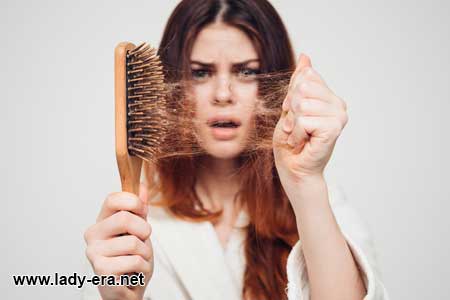Top 5 Causes of Hair Loss in Women & How to Prevent
Hair loss affects 40% of American women, especially as they get older. The age when the first signs of the problem may show themselves is 35 years old. The reason for thinning or receding hair are numerous. Fortunately, knowing the causes, it is always easier to deal with the consequences. So here are the 5 most common causes of female hair loss.
Hereditary hair loss
According to the American Academy of Dermatology, heredity is the major reason why some women lose their hair. The symptoms of the problem get more visible as women approach the menopause. It’s also important to mention that the prevalence of hair loss varies in women of different nationalities.
It is important to start the treatment as soon as you notice its first signs – thinning hair or widening part. Fast reaction to the issue will let you save as many hairs as possible, but the probability that you’ll restore your hair thickness is extremely low.

Post-pregnancy period
A lot of women are terrified with the number of hairs they see in their brush during the first months after delivery. However, there’s nothing to worry about as this process is absolutely natural. The reason is that during pregnancy, a lot of hairs go into the resting part of their life cycle. This period lasts for about 3-4 months. Hence, by the end of the pregnancy, these hairs start falling out. The thickness of the hair will be restored within a year after delivery.
Stress
Either a single extremely stressful event or a durable exposure to stress can equally harm the hair growth. Cortisol – a hormone, which is released in response to stress, negatively affects the synthesis of hyaluronan and some other skin elements. Based on the results of the study published in the Journal of Drugs in Dermatology, the amounts of the elements needed for healthy hair growth reduce by 40%.
Changes in the levels of hormones
Progesterone, which is a key female hormone plays an important role in keeping your head full of hair. A rapid decrease in the levels of estrogens usually results in a growing loss of hair. To the common conditions, which are linked to these processes are perimenopause and menopause.
Polycystic ovaries can also stimulate hair loss in women as the levels of androgens in such women are higher than in healthy individuals.
Lack of nutrients
The beauty and thickness of hair largely depend on the nutrients we get from foods. Insufficient quantities of zinc, iron, selenium, fatty acids, vitamins A, D, E, B3, B12, and other useful elements can result in hair loss.




